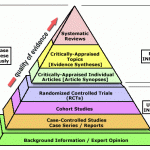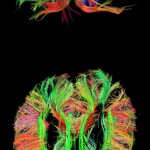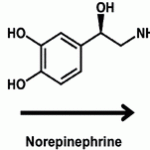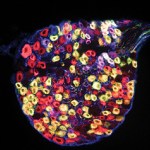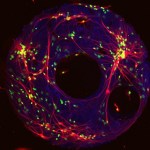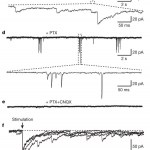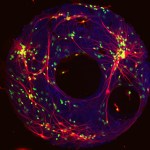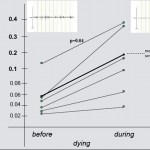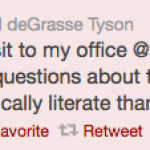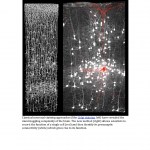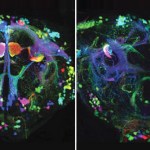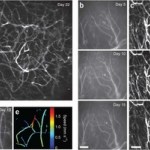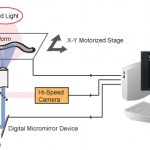Neurology
One of the most annoying phenomena when it comes to “complementary and alternative medicine” (CAM), which its advocates are more and more insistent on calling “integrative medicine” is how little the average doctor cares that pseudoscience is infiltrating medicine. The reason, of course, is that CAM advocates don’t like the “alternative” part of the term CAM. Come to think of it, they don’t like the “complementary” part, either, because it implies that conventional science-based medicine (what I like to refer to as “real” medicine) is the main treatment and what they do is just “…
Alcoholic Anonymous founder Bill Wilson put forth the controversial idea of using LSD, yes, LSD to reduce alcohol abuse. Is there any scientific evidence for this?
Published today in the Journal of Psycholpharmacology, researchers took a careful look at a wide range of studies ("meta-analysis") and concluded:
...repeated doses of LSD - for example, weekly or monthly - might elicit more sustained effects on alcohol misuse than a single dose of LSD.
And:
Of 536 participants in six trials, 59% of people receiving LSD reported lower levels of alcohol misuse, compared to 38% of people who…
Imagine the killer from the infamous "Headless Man Found in Topless Bar" murder was convicted using a photograph of the face of the victim, with reliability rivaling that of DNA analysis. Impossible?
With a skull found, how can we determine to whom it belonged?
A research group at the University of Granada has developed a new method that merges facial photographs with 3D images of a skull called craniofacial superimposition that could revolutionize forensic analysis.
How did they do it?
Identifying remains using photographs or even paintings has been used since the 19th century. This group…
Sources: PetaPixel and Photo Vatika (Sony India)
No, I'm not the first to discovery this extraordinary brain trick. I did want to share this, though, as an example of how our brain processes and stores images. Give it a try - amazing!
Sony India Interesting Ad : stare at the colored dots on this girl's nose for 30 seconds, then quickly look at a white wall or ceiling (or anything pure white) and start blinking rapidly. Congratulations, you just processed a negative with your brain!
I invite any neuroscientists to explain the mechanism!
Diffusion MRI Tractography in the brain white matter.
Some drugs work well because they are designed to hit a single, well understood target. Consider penicillin.
In a simplified sense, penicillin destroys a single enzyme that bacteria need to divide and to infect you, thereby killing the harmful bacteria. But what about psychiatric drugs? Is there a comparable, single target in the brain to treat depression, anxiety, attention deficit disorder (ADD)? No.
So, it is no wonder that the popular drug Ritalin, used to treat ADD for millions of children and adolescents is, by some standards…
A "holy grail" in spinal injury research is to repair the spinal cord with newly minted nerve cells. This study published in the journal ACS Chemical Neuroscience takes us a major leap forward, with the first evidence that cells from an umbilical cord -- not from a fetus -- can be transformed into active nerve cells. This eliminates any ethical concerns about using a fetus for medical applications.
From the Abstract:
Umbilical cord stem cells would be a favorable alternative to embryonic stem cells for therapeutic applications. In this study, human multipotent progenitor cells (MLPCs)…
Ridue's Flickr photostream. This is not an endorsement for use of marijuana.
I've always known that scientists and the news media don't get along so well, but this is a bit much.
A study just published in the Proceedings of the National Academy of Sciences describes how fatty foods can increase your appetite:
UC Irvine researchers Daniele Piomelli, Nicholas DiPatrizio and colleagues found that fats in these foods make them nearly irresistible and trigger a surprising biological mechanism that likely drives our gluttonous behavior. The apparent culprit? Natural marijuana-like chemicals in…
Beauty can be everlasting, ephemeral {internet sensations} and above all else, in the eye of the beholder. Poets and artists have explored this mystery for centuries, but can science reveal new insights?
Ed Yong at DiscoverBlogs recently wrote about a fascinating brain imaging study done that begins to address this question, exploring visual and musical stimuli. Yes, beauty can be express itself in many other ways, but this is a start.
Tomohiro Ishizu and Semir Zeki from University College London watched the brains of 21 volunteers as they looked at 30 paintings and listened to 30…
Why do we itch? Is there a cure?
Counterirritation is an effective treatment, used for decades, based a simple idea:
Pain masks the itch
For example, if you're suffering from poison ivy, taking a very hot shower can bring some relief, or ingesting something with capsaicin, the pain-inducing compound in hot peppers such as jalepenos, can be effective. Can the nerves that transmit sensations of pain and itch be separated or are they intrinsically intertwined? As shown in this "ball of nerves," separation of sensations is no easy task.
Courtesy of Xinzhong Dong
Ball Of Nerves
Just before…
What constitutes consciousness? How do you define a person? These are deep philosophical questions that I cannot answer, but MSNBC political commentator Rachel Maddow took them on - prompted, surprisingly, by one of my recent blogs "Growing a Brain in a Dish."
My earlier blog was more focused on my enthusiasm of the discovery that researchers could grow brain cells on a petri dish that were connected both physically and by electrical and chemical signals. I'll let The Maddow Blog explain, as it is more clear than my earlier post and then goes on to the deeper questions - and so I was "…
Figure 4: Synaptic responses of HFF-iN cells.
There seems to be a brain-centric theme emerging this week in groundbreaking science. Scientists at the Stanford University School of Medicine have reported in Nature the first example of transforming human skin cells into functional nerve cells. Could skin cells someday be able to "think"? Could they be used to create a biological computer or in regenerative medicine?
How did they do it? Excerpted, and revised for clarity, from their Abstract: {my comments in italics}
Somatic cell nuclear transfer, cell fusion, or expression of lineage-…
Source.
That doughnut shape decorated with bright green spots, some connected by red pathways, amidst sky blue neighbors could be an artist's creation, but is the result of a creative scientific attempt to grow an active brain in a dish, complete with memories. Really.
Researchers at the University of Pittsburgh published this stunning study in the journal Lab on a Chip {the full paper can be accessed here.} When I first learned how to grow cells in a lab, the technique of tissue culture, the idea of even growing brain cells was a far-fetched dream, much less brain cells capable of forming…
Death has been everywhere in the news media since the announcement of Bin Laden's demise on Sunday. How this historic event will affect global terrorism is unknown; perhaps the most important news of all was of the treasure trove of computers and files found in Bin Laden's luxury "compound."
With this event in mind, I came across today one of the strangest (some might say creepy) studies I have ever read - a biochemical study on death and dying. Researchers have found that death and dying can invoke euphoria and something like an "unbearable lightness." Seriously.
In a study published in…
If you're interested in the complexities of our brain, a glimpse into the incredible complexity and beauty of how connections between our neurons can lead to ultimately what makes us human, this video is a must. Take five minutes, and prepare yourself to be awestruck.
On a personal note, I am not a neuroscientist but have been following this literature lately, simply because I am drawn to trying to understand how our brains work. I am humbled by the superb job done by Charlotte Stoddart in integrating several key studies to paint a picture of our brains that can be understood, and…
Astrophysicist Neil DeGrasse Tyson has made quite an extraordinary observation about the controversial actor Charlie Sheen - did you know that Mr. Sheen is "is scientifically more literate than most"?
Given that one of my primary goals is to enhance public literacy about science and technology, such a statement - well, bothers me. I'm not sure which to question first - the judgment of Neil DeGrasse Tyson or the "scientific literacy" of a troubled albeit talented comedian/actor. Where does one even begin?
From my colleague Sheril Kirshenbaum, author of "The Science of Kissing":
A Drug…
Anyone with a young daughter knows about "bedazzled." When I first saw these images of intact, single neurons capable of generating electrical signals, "bedazzled" came to mind.
The figure above was kindly provided by Dr. Bruno Pichler at The National Institute for Medical Research in London.
According to the paper in Nature Neuroscience:
Single-cell genetic manipulation is expected to substantially advance the field of systems neuroscience. However, existing gene delivery techniques do not allow researchers to electrophysiologically characterize cells and to thereby establish an…
If you've ever wondered how a single neuron fits into the incredibly complex structure of a living brain, I highly recommend this three minute video. Be prepared to be awestruck.
This video won Honorable Mention in Science's 2010 Visualization Challenge featured in the February 18 issue.
According to the paper in Science:
Animator Drew Berry and his neurobiologist colleagues take you on a journey deep inside the mouse brain. The video brings to life data from the Whole Brain Catalog, a massive database of microscopy and other data sets on the mouse brain, under development at the…
Source.
Here is a compelling example of creative use of protein labeling technologies to view complex anatomy - a perfect complement to my ongoing series about fruit fly brains!
According to the paper in Nature Methods' Abstract: excerpted for the non-scientist;
To facilitate studies of neural network architecture and formation, we generated three types of fruit flies using the mouse Brainbow-2 system, called Flybow. Using the visual system, the embryonic nervous system and the wing imaginal disc, we show that Flybow can be used to visualize cell shape with high resolution. This could…
Imagine being able to observe the health status of your brain streaming real-time in 3D. Medical treatments for a range of neurovascular, neurological, cancerous and trauma-induced conditions would be far more effective, because snapshots over time would reveal the progression of a disease or damage.
This is not science fiction. Scientists at Stanford University have reported a new brain imaging technique in the journal Nature Medicine that takes a major step towards this goal. Proof of concept was demonstrated using mice.
Figure 3:
a) Two-dimensional projection of a three-dimensional…
Inducing a worm to lay eggs with laser light from Samuel Lab on Vimeo.
A research group at Harvard University, led by Prof. Samuel has developed a new way to manipulate nerves using lasers, given the cheeky term "CoLBeRT"{reference to Stephen Colbert}. In science terms, CoLBeRT is:
Controlling Locomotion and Behavior in Real Time
Here's how it works. The nematode is a simple organism that contains 302 neurons that can be genetically altered to make a foreign protein sensitive to a certain type of light - such as that coming from a laser. By tuning the laser to a specific wavelength,…
